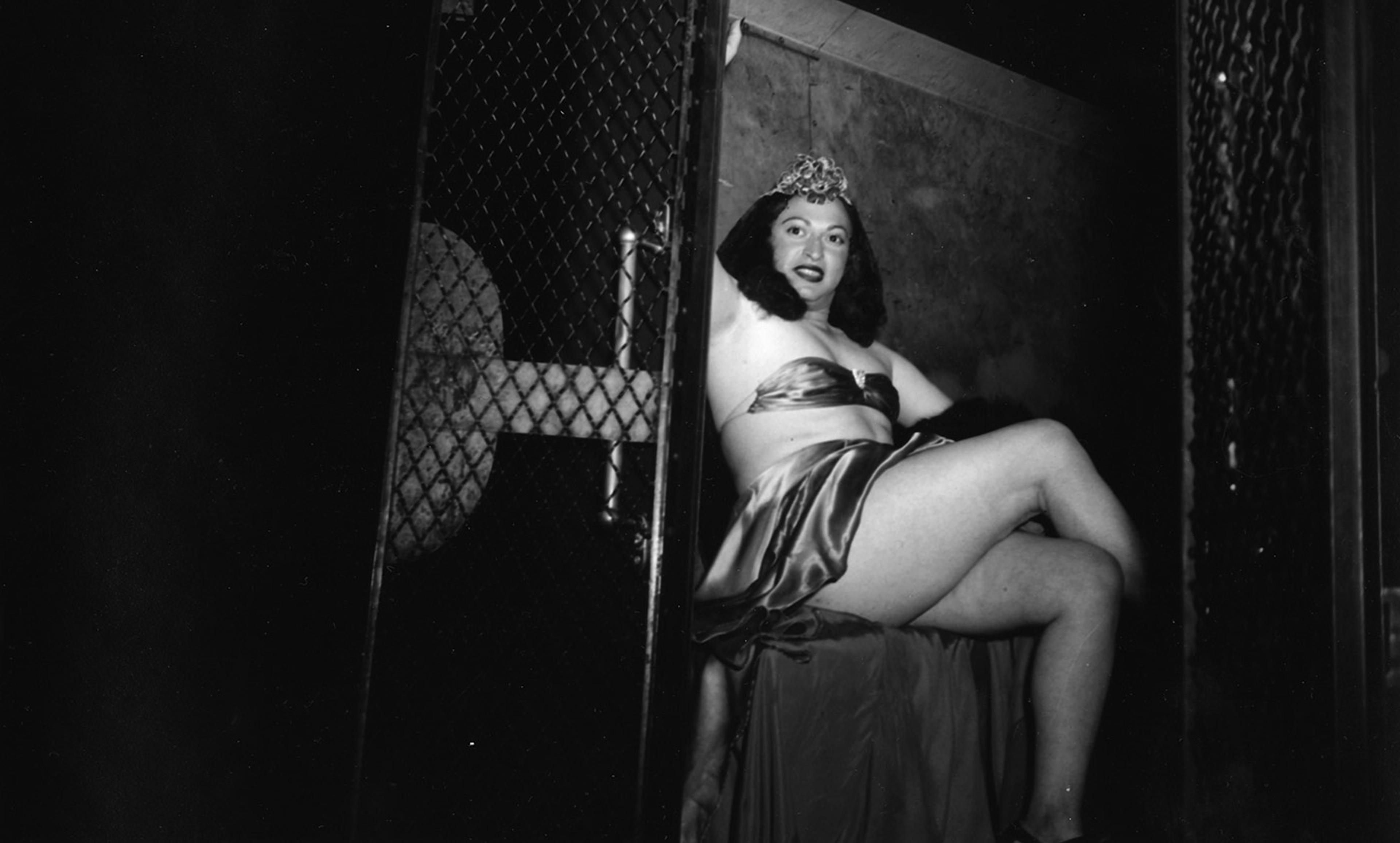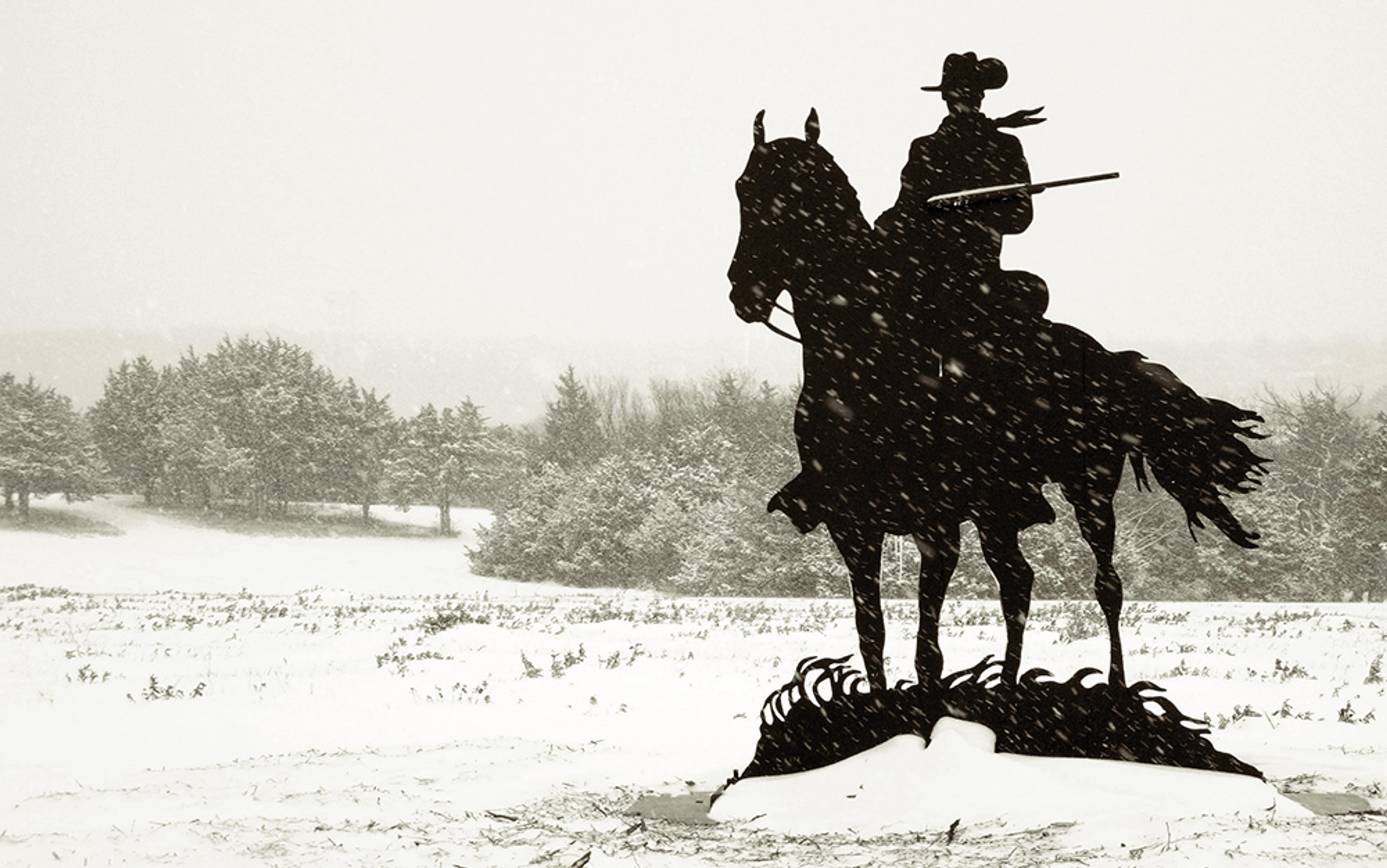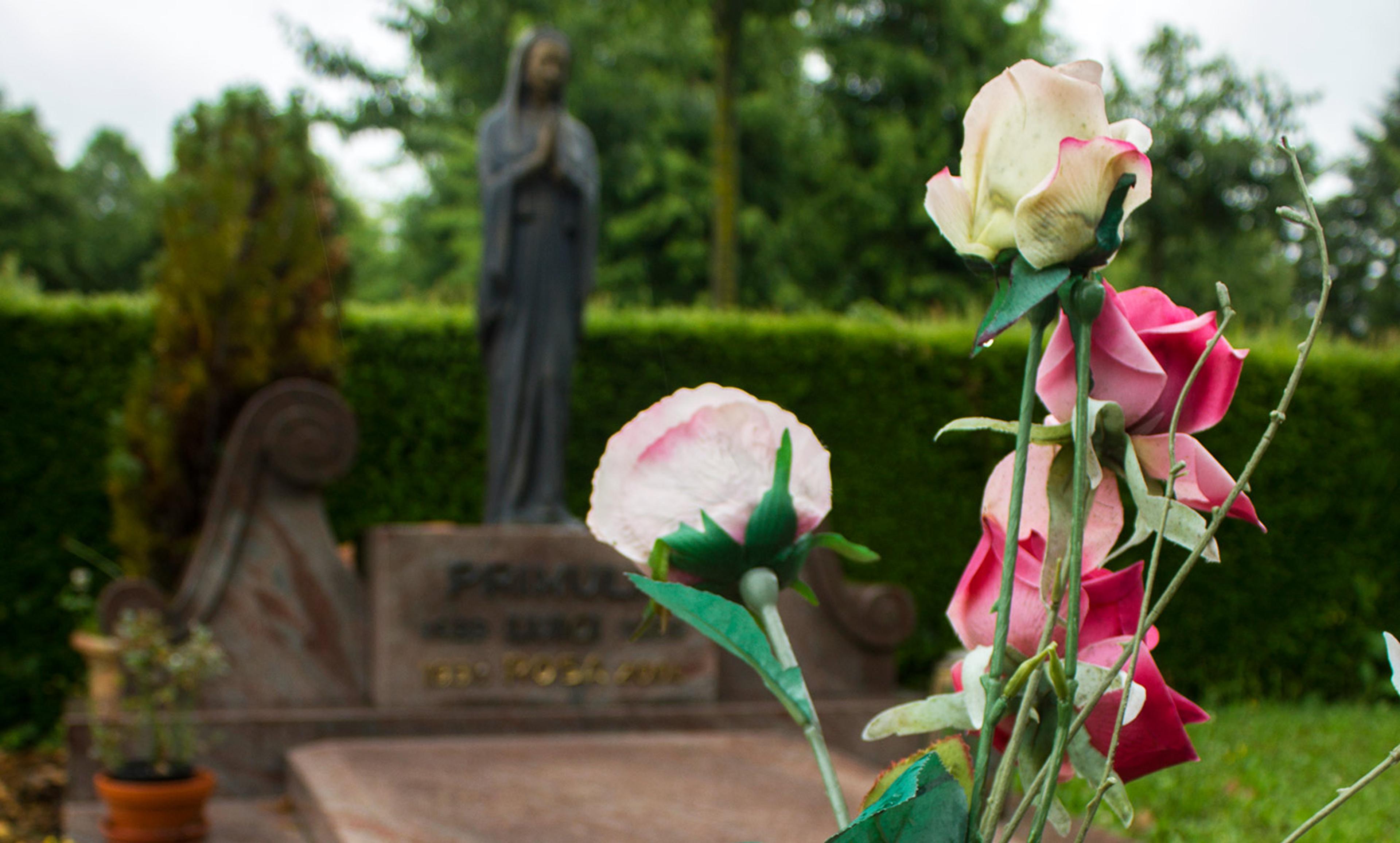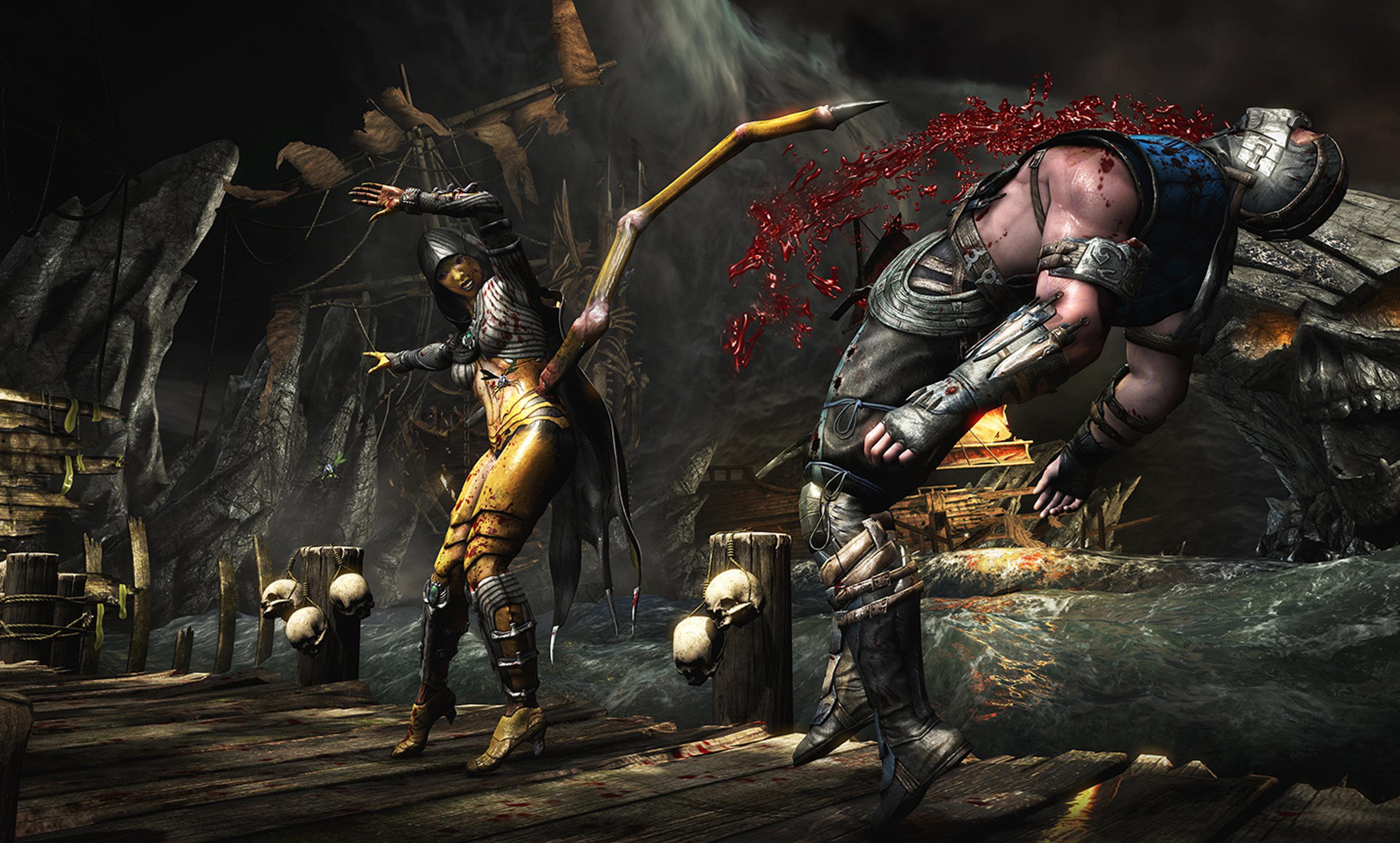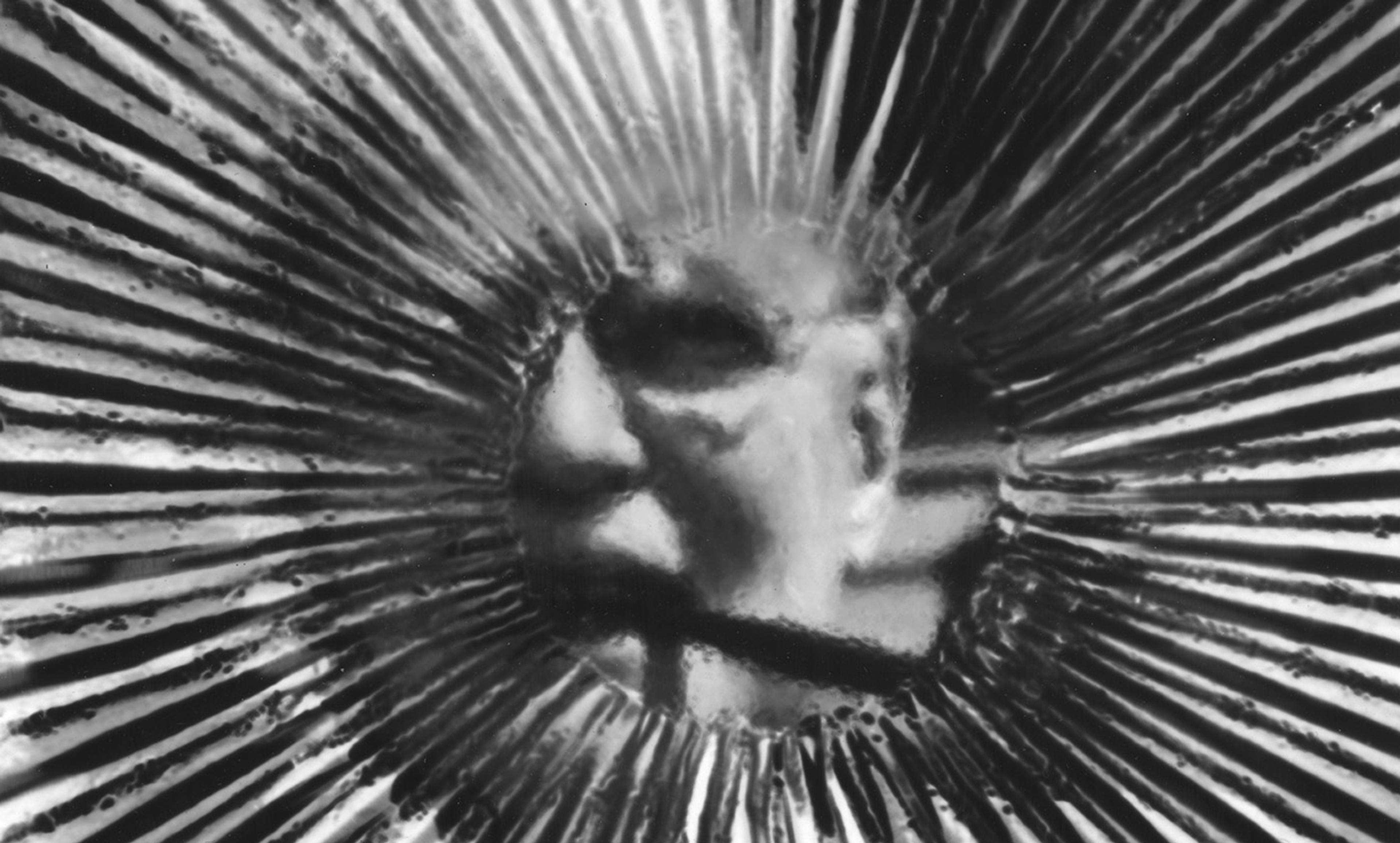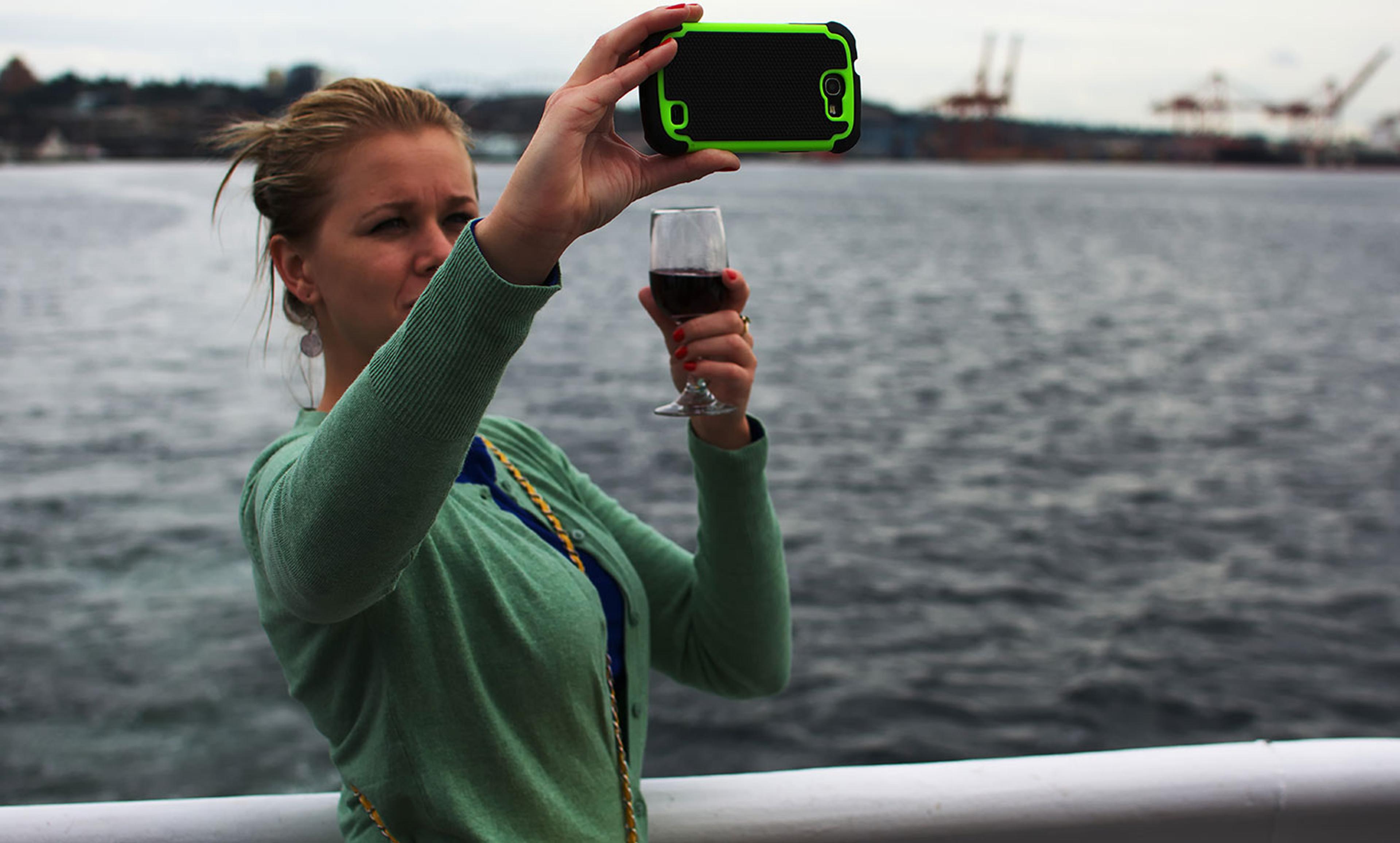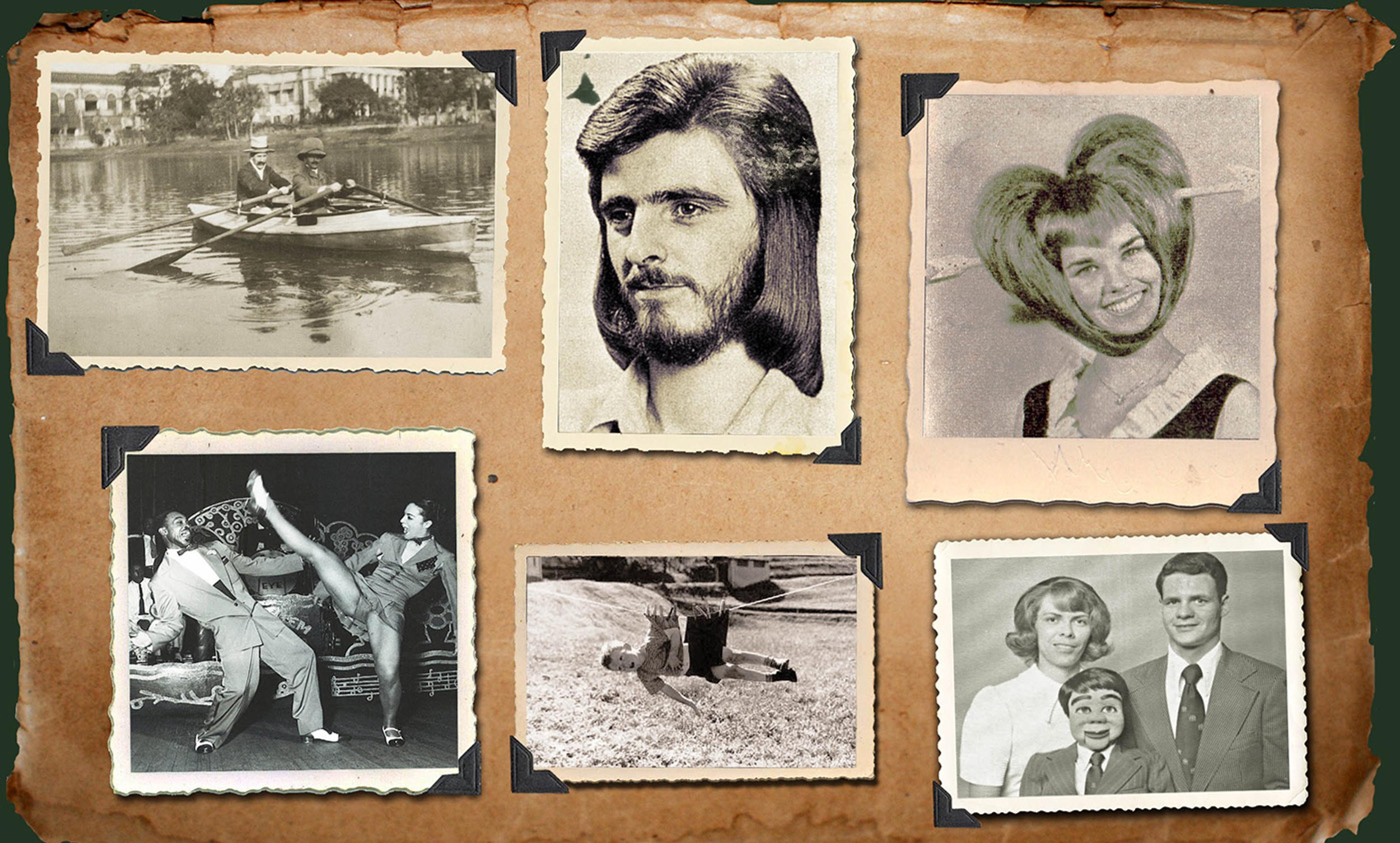A cross-dresser is taken away in a police van, circa 1939, New York. Photo by Weegee(Arthur Fellig)/International Center of Photography/Getty
Susan Sontag was deliberately provocative when she coupled photography with violence. There is, she wrote in the essay ‘In Plato’s Cave’ (1977), ‘something predatory in the act of taking a picture’. She pointed out that we speak casually about ‘loading’ and ‘aiming’ a camera: ‘Just as the camera is a sublimation of the gun, to photograph someone is a sublimated murder.’ Sontag knew that she was using hyperbole, prodding her readers to consider the seizing of someone else’s identity that is implicit in each portrait that is shot.
But it is decidedly less of an exaggeration to couple violence with one particular photographic technology: flash. From the earliest decades of flash photography, when limelight or magnesium were used to illuminate darkness, flash was associated with explosive unpredictability. Even after Johannes Gaedicke and Adolf Miethe invented a far more reliable compound – flash powder – in 1887, accidents were commonplace, maiming and injuring photographers. Not until flash bulbs were introduced around 1930 did the means for producing sudden blasts of artificial light become easier and more dependable, and this increased with the advent of the Speedlite and other electronic flash guns.
‘Flash gun’ – that nomenclature takes us full circle, since some of the early contraptions for igniting flash powder were indeed designed to look very like a revolver. The name, and the linkage of violence and weaponry, stuck. The allusion is clear in the black humour of the words that decorate some military gun barrels: ‘SMILE. WAIT FOR FLASH.’ Weaponry and photography work in consort in Alfred Hitchcock’s film Foreign Correspondent (1940), in which a man posing as a news photographer kills a central European chancellor with a pistol fired at the same moment as he sets off his flash.
Photographic flash is, however, frequently aggressive in its own right. If one is close to it, one’s eyes are startled into temporary blindness, and indeed the photographer is likely to be as dazzled as the subject. The eruption of flash disorients. Numerous early accounts of flash photography retell how it startled bystanders and horses; jokes were told about how police could confuse its effects with those of Fenian dynamiters. The disorientation is used to great effect near the end of Hitchcock’s Rear Window (1954), where Jeff (played by James Stewart) turns his flash gun on his attacker, Lars Thorwald, flaring the bulb in his face. Hitchcock’s dramatic use of reverse perspective means that we experience the shot both from behind the lens, and also as if it were going off in Thorwald’s – and our – eyes. The screen is momentarily flooded with the red of the shocked retina.
In addition to its somatic repercussions, flash can also enact a form of ethical violence. What, if anything, might justify flash’s unexpected interruption into daily lives? This is a question that has exercised documentary photographers since the mid-20th century. Among those who worked for the Farm Security Administration during the Depression in the United States, Dorothea Lange saw its use as invasive, and Ben Shahn expressed his doubts – both about photographing someone else’s private space, and about flash’s aesthetics. ‘When some of the people came in and began to use flash I thought it was immoral,’ he said. ‘You know, you come into a sharecropper’s cabin and it’s dark. But a flash destroyed that darkness.’ His dislike of artificial illumination was to be echoed by art photographers such as Henri Cartier-Bresson and André Kertész, who firmly adhered to the doctrine of using only available light. To use flash, said Cartier-Bresson, was ‘impolite … like coming to a concert with a pistol in your hand’.
This aesthetic purism was in part determined by the association of flash photography with newsmen and commercial work. The introduction of the flash bulb greatly enhanced the ability of press photographers to work at night, facilitating the documentation of crimes committed under the cover of darkness. Flash was increasingly used by police forces for detective work, too. No one more famously brought flash and crime together than the man known as Weegee, working in mid-20th-century New York to record murders, accidents and arrests. ‘A photographer is a hunter with a camera,’ he said, anticipating Sontag.
Nowhere has this determined intrusiveness been more apparent than in the work of paparazzi. Popping flash bulbs has become visual shorthand for the achievement of fame or notoriety. This firing-off of a barrage of light can be a terrifying onslaught: think of King Kong – captured, brought to New York City, exhibited on stage, and then startled into destructive rage by newspaper photographers. Paparazzi flash has come to equal unwelcome exposure, and paparazzi themselves have come to exemplify the worst excesses of the exploitative and invasive photographer.
Yet even though the violence that is caused, or recorded, by flash photography might be cruel, unpleasant or shocking, we should note a paradox. Flash – particularly high-speed flash – can find a terrible beauty in destruction. The strobe light that the pioneering scientific photographer Harold Edgerton used to show a bullet piercing a playing card, an apple and a row of inflated balloons creates a display of shredded material that no human eye could ever see. Similarly, the Israeli-born artist Ori Gersht’s videos and photographs depict bullets shattering freeze-dried flowers and fruits that have been assembled to look like Dutch Golden Age still-lifes, and dispersing them into shards: the images bring out the inherent fragility of natural objects.
But if Gersht’s images, like so many of the Dutch paintings that he references, imply a memento mori message, the beauty vanishes when we are confronted with irrevocable physical violence. One of the most startling images in the handbook Flash Photography (1947) by the African American Gordon Parks shows the execution of a collaborator by a French firing squad in November 1944. Kneeling, tied to a post, a large handkerchief masking his face, at the back of his neck is a blur of precipitated matter. Parks’s caption is laconic: ‘One bulb was used on the camera. The photographer’s flash was well-timed to catch flesh and clothing as bullets tore them from the body.’ Instrument of aggression, and facilitator of its photographic capturing, the history of flash photography is disconcertingly inseparable from violence.
Flash!: Photography, Writing, and Surprising Illumination by Kate Flint is out now through Oxford University Press.
